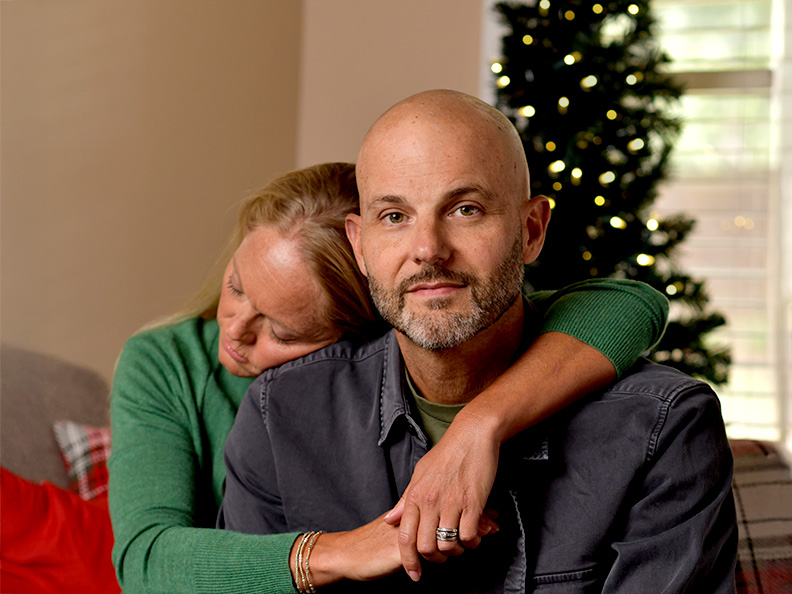Your gift is 100% tax deductible
Hodgkin Lymphoma Causes, Risk Factors, and Prevention
The exact cause of Hodgkin lymphoma isn’t fully known. Researchers are beginning to understand how certain gene changes play a role, but they don’t yet know what sets off these changes. Many people who get Hodgkin lymphoma have few or no known risk factors.
What causes Hodgkin lymphoma?
The exact cause of Hodgkin lymphoma isn't fully known, but researchers do know it involves damage to DNA inside certain cells. These changes affect how the cells grow, how they signal other cells, and how they avoid being destroyed by the immune system.
Reed-Sternberg cells and Hodgkin lymphoma
Some cases of Hodgkin lymphoma are linked to a virus called Epstein-Barr virus (EBV). In certain people, an EBV infection can lead to the development of Reed-Sternberg cells, the cancer cells found in Hodgkin lymphoma.
Scientists have discovered that Reed-Sternberg cells contain many gene changes that help them grow too much and live longer than they should. These cells can also avoid being destroyed by the immune system. They send out signals that confuse the immune system and attract other immune cells that help the cancer survive.
These tricks allow the lymphoma to grow, even though the body is trying to fight it.
Despite these advances in understanding, scientists still don’t know why Reed-Sternberg cells develop and what sets off the process. In some cases, an abnormal reaction to Epstein-Barr virus or other infections may be the trigger.
A lot more research is needed to understand what causes Hodgkin lymphoma.
Hodgkin lymphoma risk factors
A risk factor is anything that increases your chance of getting a disease like cancer. Different cancers have different risk factors. Some cancer risk factors, like smoking, can be changed. Others, like your age or family history, can’t be changed.
There are a few risk factors that increase the chance of getting Hodgkin lymphoma, but it’s not always clear why these factors increase risk. Having a risk factor, or even many, doesn’t mean you'll get the disease. Many people who get Hodgkin lymphoma have few or no known risk factors.
Most people in the U.S. have been infected with the Epstein-Barr virus (EBV). EBV causes infectious mononucleosis, often called mono. People who’ve had mono are at an increased risk of Hodgkin lymphoma.
The exact role of EBV in the development of Hodgkin lymphoma isn't clear.
Many people are infected with EBV, but few develop Hodgkin lymphoma. Parts of the virus are found in the Reed-Sternberg cells of about 1 in 4 people with classic Hodgkin lymphoma in the United States. However, most people with HL have no signs of EBV in their cancer cells.
A person can be diagnosed with Hodgkin lymphoma at any age, but it's most common in:
- Early adulthood (especially in a person’s 20s)
- Late adulthood (after age 55)
Hodgkin lymphoma occurs slightly more often in males than in females.
- Brothers and sisters of young people with Hodgkin lymphoma have a slightly higher risk of developing it.
- The risk is very high for an identical twin of a person with the disease.
However, family links are still uncommon. Most people with Hodgkin lymphoma don’t have a family history.
It’s not clear why family history might increase risk. It might happen because family members have similar childhood exposures to infections like Epstein-Barr virus, because they share inherited gene changes that make them more likely to get Hodgkin lymphoma, or some combination of these factors.
People infected with HIV, the virus that causes AIDS, have an increased risk of Hodgkin lymphoma.
People with auto-immune diseases and people who take medicines to suppress their immune system after an organ transplant are also at higher-than-normal risk for Hodgkin lymphoma.
Can Hodgkin lymphoma be prevented?
Few of the known risk factors for Hodgkin lymphoma can be changed, so it's not possible to prevent most cases of the disease at this time.
Infection with the Epstein-Barr virus, the virus that causes mono, has been linked to Hodgkin lymphoma. However, this infection is very common and only a small number of people ever develop Hodgkin lymphoma.
Limiting HIV risk: Infection with HIV (the virus that causes AIDS) is known to increase the risk of Hodgkin lymphoma. Avoiding known risk factors for HIV, such as intravenous (IV) drug use or unprotected sex with many partners, is one way to limit your risk for this type of cancer.
You can read more about this in HIV Infection and Cancer.
- Written by
- References

Developed by the American Cancer Society medical and editorial content team with medical review and contribution by the American Society of Clinical Oncology (ASCO).
American Cancer Society. Cancer Facts & Figures 2025. Atlanta, Ga: American Cancer Society; 2025.
American Society of Clinical Oncology. Lymphoma - Hodgkin: Risk Factors (04/2025). Accessed at www.cancer.net/cancer-types/lymphoma-hodgkin/risk-factors on July 10, 2025.
Bartlett NL, Foyil KV. Chapter 105: Hodgkin lymphoma. In: Niederhuber JE, Armitage JO, Dorshow JH, Kastan MB, Tepper JE, eds. Abeloff’s Clinical Oncology. 5th ed. Philadelphia, Pa. Elsevier: 2014.
National Cancer Institute. Adult Hodgkin Lymphoma Treatment (PDQ®)–Patient Version. Feb 27, 2025. Accessed at www.cancer.gov/types/lymphoma/patient/adult-hodgkin-treatment-pdq on July 10, 2025.
Younes A, Carbone A, Johnson P, Dabaja B, Ansell S, Kuruvilla J. Chapter 102: Hodgkin’s lymphoma. In: DeVita VT, Lawrence TS, Rosenberg SA, eds. DeVita, Hellman, and Rosenberg’s Cancer: Principles and Practice of Oncology. 10th ed. Philadelphia, Pa: Lippincott Williams & Wilkins; 2015.
Last Revised: October 6, 2025
American Cancer Society medical information is copyrighted material. For reprint requests, please see our Content Usage Policy.
American Cancer Society Emails
Sign up to stay up-to-date with news, valuable information, and ways to get involved with the American Cancer Society.



